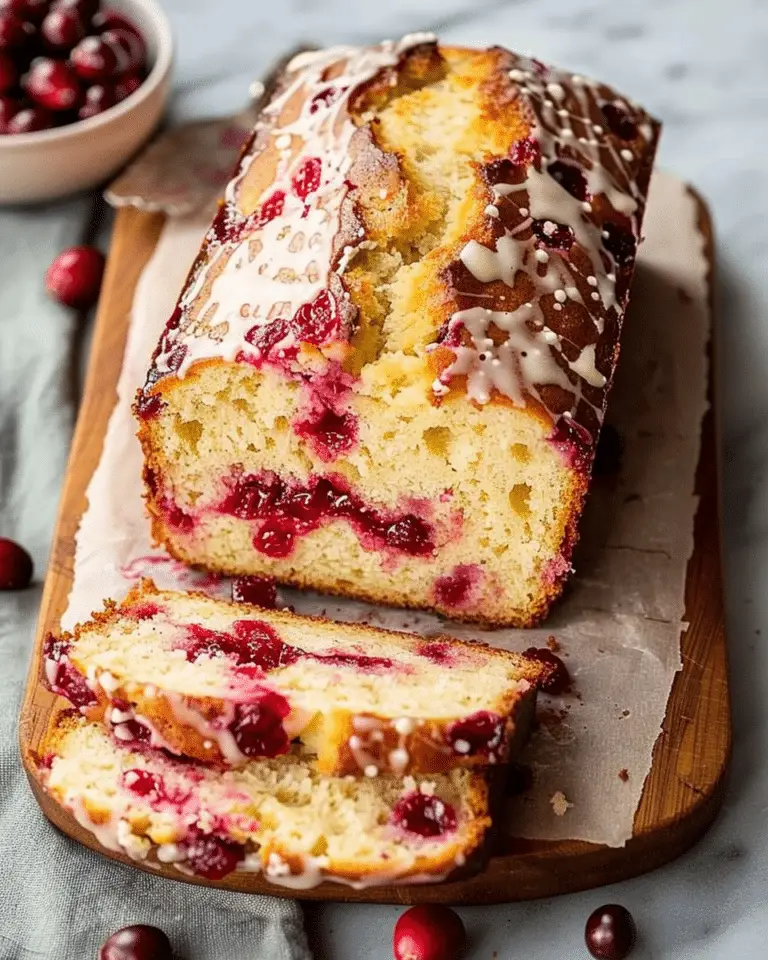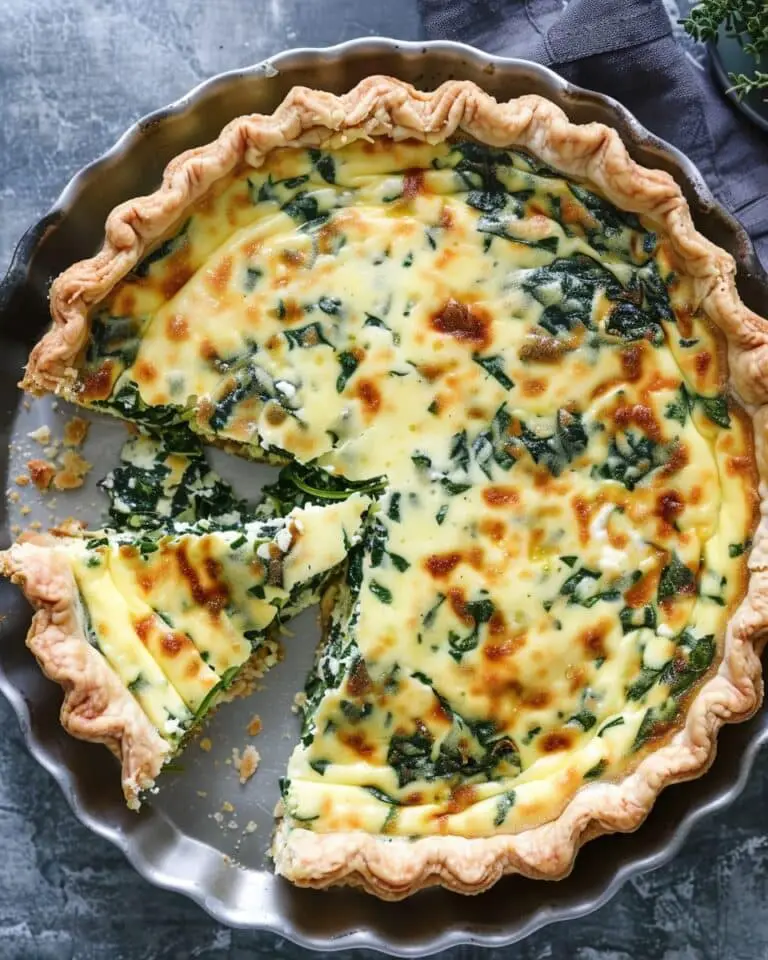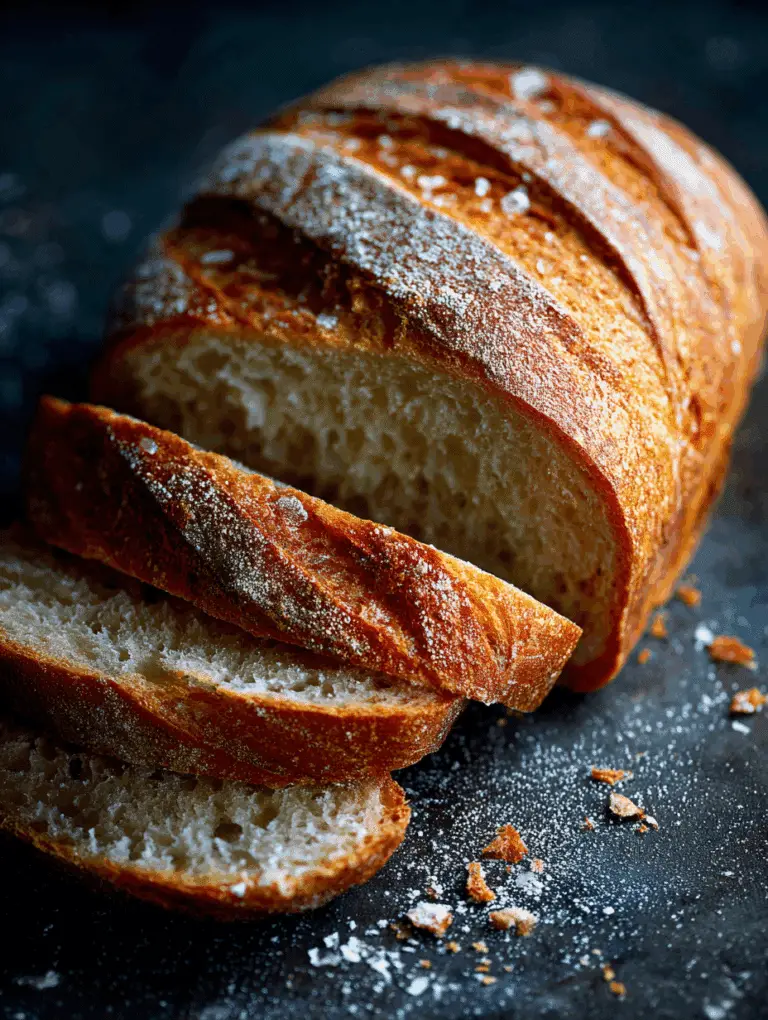This Rustic Sweet Potato and Sage Artisan Loaf is more than just bread—it’s an experience. Every step, from mashing the sweet potatoes to scoring the dough before baking, creates anticipation for that first warm slice. I love how the natural sweetness of the potato blends with the earthy aroma of sage, creating a loaf that feels comforting, nourishing, and just a little bit special. Whether I’m serving it with soup, cheese, or enjoying it on its own with a pat of butter, this loaf is a staple I come back to again and again.
Why You’ll Love This Recipe
What makes this loaf truly shine is the texture and flavor combo. The crust bakes up beautifully golden and crackly, while the inside stays moist and tender thanks to the sweet potato. I also love that it’s a no-fuss artisan-style bread—no fancy equipment or complicated techniques needed. With just a few simple ingredients, it delivers bakery-quality results that impress every time. Plus, it’s packed with nutrients and naturally free from preservatives, making it as wholesome as it is delicious.
Ingredients
(Here’s a tip: Check out the full list of ingredients and measurements in the recipe card below.)
- Water (room temperature)
- Active dry yeast
- Bread flour or all-purpose flour
- Fresh sage leaves, finely chopped
- Kosher salt or fine sea salt
- Mashed sweet potato (cooled and smooth)
- Extra-virgin olive oil
Directions
Step One: Activate the Yeast
I pour the water into a small bowl and stir in the yeast. After about 10–15 minutes, it starts to foam, signaling that it’s ready to work its magic.
Step Two: Mix Dry Ingredients
In a large bowl, I whisk together the flour, salt, and finely chopped sage. This step ensures even seasoning and gives the loaf its herby backbone.
Step Three: Add Sweet Potato
I fold in the mashed sweet potato. If it’s lumpy, I use a fork to smooth it out before mixing so it blends well with the dry ingredients.
Step Four: Combine Everything
I add the yeast mixture and olive oil into the flour mixture and stir with a spatula. The dough is sticky and a little messy—that’s exactly how it should be.
Step Five: Let It Rise
I cover the bowl and let the dough rise overnight (8–10 hours) in a warm, draft-free space. By morning, it’s doubled in size and bubbly.
Step Six: Shape and Chill
I gently shape the dough into a ball on a floured surface, folding it into itself a few times. Then I place it seam-side up into a floured proofing bowl, cover, and refrigerate for at least 1 hour (or up to 48 hours for deeper flavor).
Step Seven: Preheat and Score
With a Dutch oven inside, I preheat my oven to 450°F. While it heats, I invert the dough onto parchment paper, seam-side down, and score the top using a sharp knife or razor blade.
Step Eight: Bake
I carefully place the dough (on parchment) into the Dutch oven. I bake covered for 30 minutes, then uncovered for another 15–20 minutes until golden brown and hollow-sounding when tapped.
Step Nine: Cool Before Slicing
Once out of the oven, I let the loaf rest on a wire rack for at least 1 hour before slicing to preserve its texture.
Servings and timing
This recipe yields 1 artisan loaf, enough for 8–10 hearty slices.
Prep time is 20 minutes, rise time is 8–10 hours, and bake time is about 45–50 minutes, plus 1 hour cooling time.
Variations
When I want to play with the flavors, I sometimes add roasted garlic or a handful of chopped walnuts for added texture. I’ve also swapped the sage for rosemary or thyme, depending on what I have on hand. If I’m aiming for a heartier loaf, I’ll replace 1 cup of flour with whole wheat flour for a nuttier flavor.
storage/reheating
On the counter: I wrap the loaf in a clean towel or store it in a paper bag. It stays best for 2–3 days. I avoid plastic bags, which can make the crust soggy.
In the freezer: I slice the loaf first, wrap it tightly in foil or place slices in a freezer-safe bag, and freeze. I toast straight from frozen or let it thaw at room temperature before reheating.
FAQs
Can I use canned sweet potato?
Yes, I’ve used canned sweet potato in a pinch. I make sure it’s smooth and not overly watery to keep the dough the right consistency.
What if I don’t have a Dutch oven?
I’ve baked this in a cast iron skillet or even on a baking stone with an oven-safe bowl of water on the rack below to create steam. It won’t be quite as crusty, but still delicious.
Can I knead the dough instead of letting it rest overnight?
This recipe is designed for long fermentation, which gives the bread its flavor and texture. While kneading can work, the result will be different and less complex.
How do I know when it’s fully baked?
The crust should be deep golden and the loaf should sound hollow when tapped on the bottom. If in doubt, a quick-read thermometer should read around 200–205°F in the center.
Is it okay to skip the sage?
Yes. If sage isn’t your thing, I’ve made it with just sweet potato, and it’s still fantastic. Try swapping in other herbs like thyme, rosemary, or even parsley.
Conclusion
This Rustic Sweet Potato and Sage Artisan Loaf is one of those rare recipes that feels both soul-satisfying and impressively simple. It’s earthy, aromatic, and perfect for sharing. Whether I’m slicing it for soup night, toasting it for breakfast, or gifting a loaf to a friend, this bread never disappoints. It’s a true comfort baked from scratch.
PrintRustic Sweet Potato and Sage Artisan Loaf
This Rustic Sweet Potato and Sage Artisan Loaf is a wholesome, flavorful bread with a golden crust and tender crumb. Made with mashed sweet potato, fresh sage, and no kneading, it’s the perfect homemade artisan loaf for soup nights, brunch, or gifting.
- Prep Time: 20 minutes
- Cook Time: 45–50 minutes
- Total Time: 10–12 hours
- Yield: 1 artisan loaf (8–10 slices)
- Category: Bread
- Method: No-Knead, Baked
- Cuisine: American, Rustic
- Diet: Vegetarian
Ingredients
- Water (room temperature)
- Active dry yeast
- Bread flour or all-purpose flour
- Fresh sage leaves, finely chopped
- Kosher salt or fine sea salt
- Mashed sweet potato (cooled and smooth)
- Extra-virgin olive oil
Instructions
- Stir yeast into water and let sit until foamy, about 10–15 minutes.
- In a large bowl, whisk together flour, salt, and chopped sage.
- Add the mashed sweet potato and stir to incorporate.
- Pour in the yeast mixture and olive oil, mixing until a sticky dough forms.
- Cover the bowl and let the dough rise at room temperature for 8–10 hours, until doubled and bubbly.
- Gently shape the dough into a round loaf. Place seam-side up in a floured proofing bowl, cover, and refrigerate for 1–48 hours.
- Preheat Dutch oven at 450°F. Invert the dough onto parchment paper and score the top.
- Bake covered for 30 minutes, then uncover and bake an additional 15–20 minutes until deep golden brown.
- Remove from oven and let cool on a wire rack for 1 hour before slicing.
Notes
- Canned sweet potato works—just drain excess liquid.
- Use rosemary or thyme instead of sage.
- Add roasted garlic, walnuts, or substitute some flour with whole wheat.
- No Dutch oven? Use a baking stone or sheet with steam (bowl of water in oven).
- Check for doneness with a thermometer: center should read 200–205°F.
Nutrition
- Serving Size: 1 slice
- Calories: 190
- Sugar: 1g
- Sodium: 320mg
- Fat: 4g
- Saturated Fat: 0.5g
- Unsaturated Fat: 3.5g
- Trans Fat: 0g
- Carbohydrates: 34g
- Fiber: 2g
- Protein: 5g
- Cholesterol: 0mg








